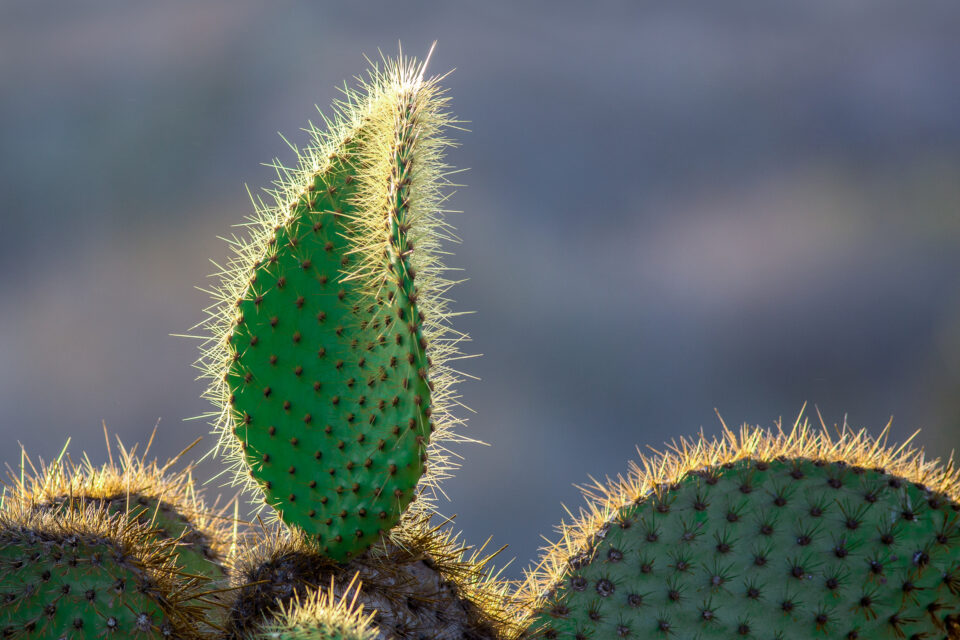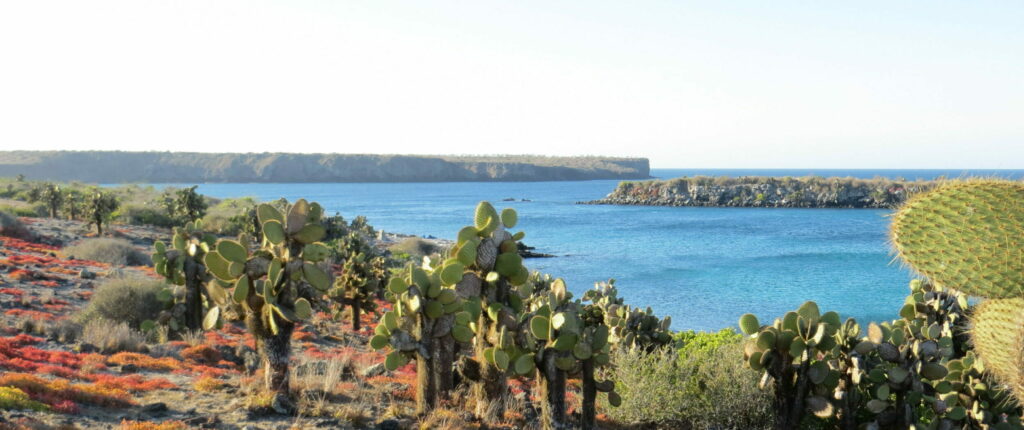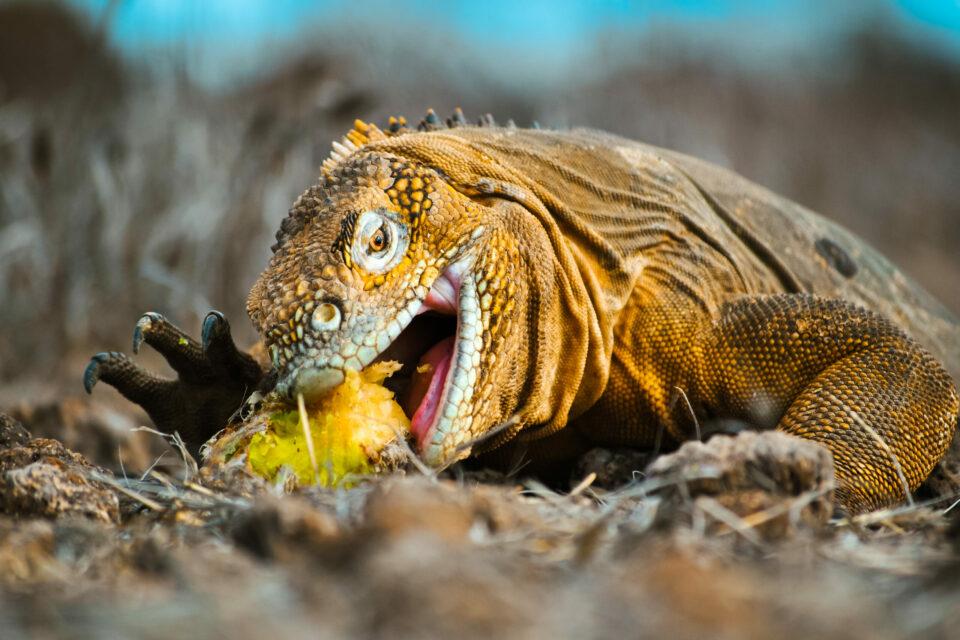
Islands overview
North and South Plaza were formed by geological uplift that was uneven in nature, meaning that both islands have cliffs on their south side and low-lying shores to the north.
South Plaza is a popular tourist visitor site, while North Plaza is off-limits and only accessible to researchers. Another interesting difference is the fact that land iguanas are present on South Plaza but have never been recorded on North Plaza. In fact, South Plaza is the only place in the Archipelago where the territories and breeding seasons of land and marine iguanas overlap, which has led to interbreeding and the presence of hybrid iguanas.
South Plaza is also known for its colourful flora, carpeted in the endemic low-growing succulent Sesuvium edmonstonei (also known as Galapagos carpet weed) which changes colour with the seasons. The landscape is also dotted with towering Opuntia cacti. As well as iguanas, the island is home to a significant population of Galapagos sea lions and numerous seabirds.
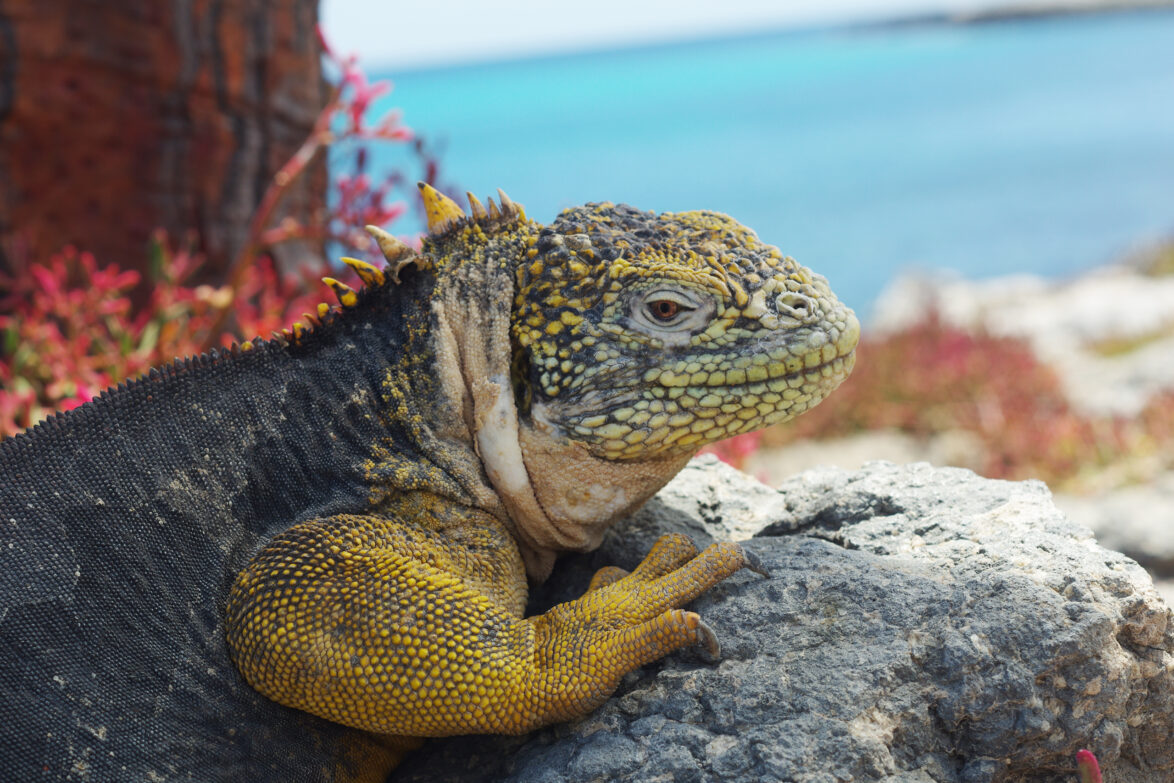
Wildlife highlights

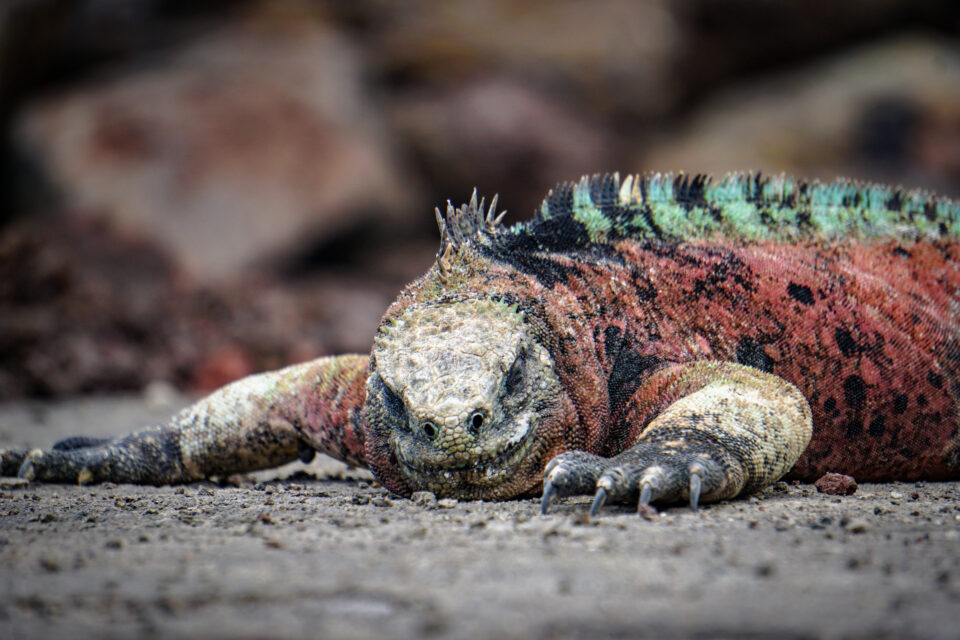
Marine iguana

Galapagos sea lion
